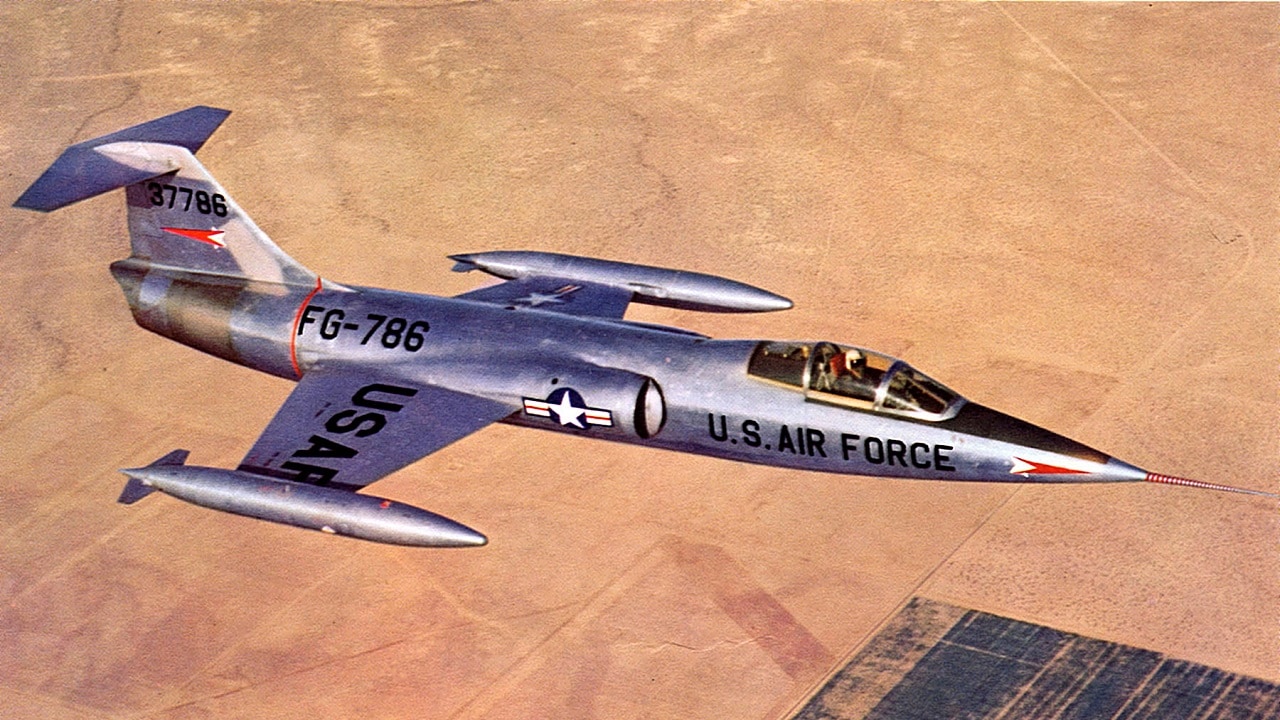I often hear from 19FortyFive readers taking exception to my work. Not always, but sometimes the correspondence can be tough – so be it. But recently, I received some pushback from a credible source offering excellent insights into a jet I had written to malign. I want to amplify those insights here.
When I wrote to rate the Century Series, including the F-104 Starfighter, as the worst batch of fighter jets ever, Ed Cobleigh took exception.
Mr. Cobleigh is a former fighter pilot (turned aviation writer) with experience flying the F-4 Phantom, A-4 Skyhawk, F-16 Viper… and the F-104 Starfighter. Mr. Cobleigh logged 375 combat missions during the Vietnam War and earned two Distinguished Flying Crosses, plus the Air Medal.
So, I paid attention when he wrote to contest my inclusion of the F-104 as one of the worst jets ever.
The F-104
I had a tough time including the F-104 on my worst fighters ever list because a), I think the jet is gorgeous, and b), the NF-104 variant is featured in one of my all-time favorite films, The Right Stuff. Yet, in an effort to be less superficial, and more objective, I included the F-104.
Why? Because in part the F-104 lacked the range or payload capacity to be an effective interceptor (which is the role the jet was designed to conduct).
But mostly, I included the F-104 because of the jet’s accident rate – which was off-the-charts.
The USAF lost 25.2 F-104s per 100,000 flight hours – significantly higher than other jets. Export customers lost the F-104 at even higher rates; West Germany, Belgium, Italy, and Canada lost 32, 41, 37, and 46 percent of their F-104 fleets respectively.
So, I felt comfortable including the F-104 on the worst fighters list. Which is of course when I heard from Mr. Cobleigh.
A Pilot Responds
“I have to take exception to your inclusion of the F-104 in the “worst” category,” Mr. Cobleigh wrote. “I flew the F-104 and found it to be the most fun you can have with your clothes on.”
Recreational benefits aside, Mr. Cobleigh qualified the F-104’s accident rates.
“The accident rates you quote, while accurate, need some elaboration,” Mr. Cobleigh began. “The aircraft was rushed into service before it was ready. Another year of testing and upgrades would have remedied many of the reliability problems.”
Yet, according to Mr. Cobleigh, the primary cause of F-104 accidents wasn’t the jet’s design or reliability – but the pilots.
“The major cause of accidents wasn’t the aircraft but the pilots,” Mr. Cobleigh wrote. “The Zipper had high wing loading (though not as high as the F-101), a high landing speed, and high thrust. It turned well at high IAS, the corner velocity was 420 knots. At low speeds, not so much. The problem was that pilots transitioning into the 104, particularly allied pilots, were used to fighters with low wing loading and low thrust-to-weight ratios such as the F-86, F-84, and Fiat G-91. No one thought to re-think air-to-air tactics for the 104 and pilots used to turning fights tried to use the same techniques with disastrous results. Also, in the late post-WWII era, allied pilots didn’t get enough flying time to perfect tactics for the modern age.”
Additionally, “the German Air Force lost four 104s when the formation leader flew into a mountain in bad weather. Not the jet’s fault.”
MORE: Zumwalt – The Navy’s Stealth Destroyer Firing Hypersonic Missiles?
MORE: Could the U.S. Navy Bring Back Battleships?
Harrison Kass is the Senior Editor at 19FortyFive. An attorney, pilot, guitarist, and minor pro hockey player, Harrison joined the US Air Force as a Pilot Trainee but was medically discharged. Harrison holds a BA from Lake Forest College, a JD from the University of Oregon, and an MA from New York University. Harrison listens to Dokken.

